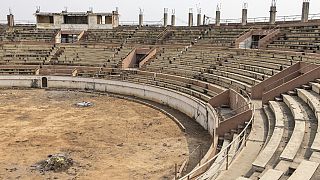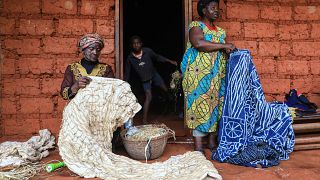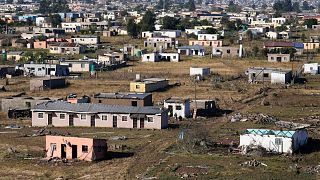Morocco
The Moroccan city of Safi is celebrated for its colourful ceramics.
Located around 300 kilometres from Rabat, the coastal town is considered the centre of the country's ceramics industry.
Shopkeeper Abdelouahed Bennoura says it is the quality of the craftsmanship that makes Safi's ceramics special.
"The city of Safi is characterised by traditional and modern pottery, characterised by high quality, that why there is a great demand by people who want to purchase this product. Safi has been known since ancient times for the quality of its products."
The clay around Safi is chalky and rich in iron oxide, which creates a texture that gives metallic reflections to the pottery.
The clay is put into water and left for 48 hours to become a paste.
The paste is then kneaded by foot on a sunny terrace and left for another day to dry in slabs.
Then the paste is kneaded again before being taken to the potter's wheel where it is shaped into bowls, vases, plates and cups.
Finally, it is decorated, enamelled and fired for 5 hours at 960°C, then it needs to rest for around 20 days.
This work is done by more than 2000 potters who gather in a district dedicated to this craft called the potters' hill where there are more than 200 workshops.
Potter Mohamed Sentil Rbati, says the geology around the city means they have plenty of raw materials.
"The clay of the city of Safi is famous worldwide thanks to the raw materials that we have here, and this makes it an easy material to knead, and when we work on it, it is very flexible, and this material is available in the city of Safi and it is easy to obtain."
Rbati has worked as a potter since 1972, in a small workshop where his grandparents worked for nine generations.
Many artisans like Rbati shun modern techniques and technology in favour of traditional methods.
"We, as potters in Safi, are proud because we still adhere to the traditional and simple ways of working and this method we inherited from our ancestors, and despite the fact that we are in the era of technology, but people always encourage these traditional ways of working, whether in the matter of kneading clay or mixing colours," he says.
However, this means that they can't compete on price with cheaper imitations he explains.
"We are afraid of competition, especially from those who may imitate the shapes that we produce and create them in other ways by machine, for example. We are afraid of this and that they will compete with us in the market at a lower price."
Each month he produces between 600 and 1200 pieces.
The prices of the items can vary enormously from 10 Dh (1 Euro) and 500,000 Dh (50,000 Euro).
Rbati exports 800 pieces per month to customers around the world including France, UK and Germany.
"People still prefer the handmade product because they know that it is of higher value," he says.
The city is home to Morocco's National Ceramics Museum, which displays 600 ceramic artworks created by local artisans from Safi, and also other cities like Fez, over the centuries.
Between 2,000 and 6,000 visitors visit the museum each year.
Said Chemsi, a historian and curator at the museum says the people who come to Safi to purchase pottery, often stop by the museum to research styles.
"The National Museum of Ceramics, after its establishment, contributed to highlighting craft and also the city nationally and internationally, because most of the tourists who come to Safi in order to acquire ceramics, also visit the museum in order to get acquainted with the various shapes and decorations."
The government now hopes to submit an application to UNESCO to consider the ceramic skills of Safi as an intangible cultural heritage at some point in the future.
"The port contributes to the marketing of ceramic products internationally. That prompted the Ministry of Culture to prepare a file in order to classify the ceramic skills of Safi as an intangible heritage on the UNESCO list," says Chemsi.
There are several sites of pottery production in the area, but the main ones are located in two-quarters of the city: the Potters Hill and the Chaaba valley.












Go to video
Moroccan museums open doors for free to inspire youth pride and cultural connection
Go to video
Women redefine Gnaoua at Essaouira Festival
02:18
Netherlands returns 119 artifacts looted from Nigeria
01:15
Morocco says 2024 was the hottest year with temperatures reaching 47.7 degrees
Go to video
Morocco to reassess Turkey trade deal amid swelling deficit
01:10
Ghana ends support to Western Sahara, backs Moroccan autonomy plan instead